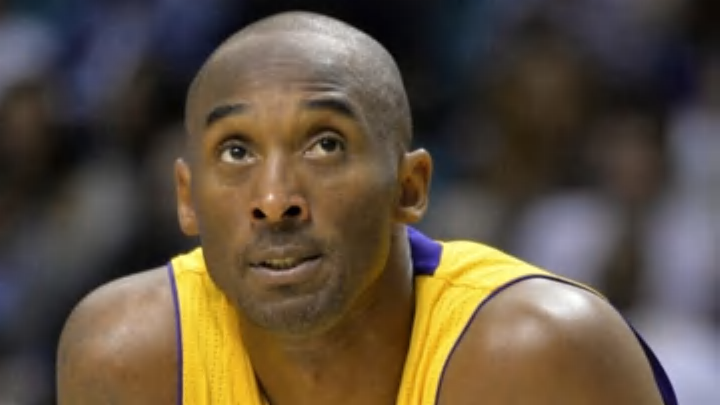
After the Lakers suffered a humiliating 132-114 loss to the Kings, Kobe Bryant suggested that it might be time to reexamine his role as the driving force of the offense. As ESPN’s Baxter Holmes reported:
"“I’m really wanting to let the young guys, especially D’Angelo [Russell], let him call the game,” Bryant said. “Let him call the game. Let him organize the game. Let him read the game. Let him read the flow. Let him make those decisions. “Which is part of me taking a step back, which needs to be done. You have to let the young guys make those reads and you have to be able to help them and support them with those reads.”"
This statement focuses on who should dictate the direction of the Lakers’ offense (or, as the ESPN headline puts it, “call the shots”). But it still raises many questions as to what it would actually mean for Bryant to defer. If, for example, Russell were to serve as the leading initiator, and the ball continues to find Bryant with the same frequency, can we really say that the Black Mamba has stepped back?
It might seem like an overly theoretical way to frame the issue, but it speaks to the challenges of defining “deference” in this situation. Moreover, if we’re unclear about definitions, how can we assess whether the Lakers’ young players have truly benefited from Bryant’s reduced role? Although this question is too complex to be addressed here, we can at least outline some metrics that might help us structure our thinking.
The most obvious starting point is playing time. Fewer minutes would signal a reduced influence on the team (to say nothing about coming off the bench or sitting out games altogether[1. Apart from deliberate attempts by the Lakers to manage Bryant’s workload, these two scenarios seem unlikely right now.]). Thus far, Bryant has averaged 27.5 minutes a game, down from the 34.5 that he logged in less than half of last year’s contests. If this number remains in the mid-20s or perhaps even further declines, then the young players by necessity have more opportunities to grow into their own.
Things might not be as clear-cut when we look at metrics while Bryant is on the floor. Is it simply a matter of lowering his field-goal attempts so that he has fewer games like the opening matchup against the Timberwolves, when he collected 24 points on 24 shots (including 13 from three-point range) in 29 minutes? Or do the play types in which he’s involved matter, too? In his first two games, he was in isolation roughly a third of the time, producing 0.33 points per possession. Would high shot attempts be more tolerable from the standpoint of supporting his younger teammates so long as such offensive situations become less frequent?
Another angle is the concept of facilitation. A common refrain says that, in lieu of scoring, Bryant should create opportunities for others, effectively decreasing his 1.88 ratio of shots to assist chances. This idea contains an implicit assumption that his level of involvement would be roughly the same, but manifested in a more “self-sacrificing way.” Is that what the Lakers should pursue? Last season, Bryant had roughly 70 touches per 36 minutes and 15% time of possession (seventh among wings with at least 1,000 MP). Should these numbers go down as well?
In many respects, it’s almost a necessity for Bryant’s overall activity to decline if he truly wants the next generation to develop. He had a 49.9 percent true usage last year, which ranked second among wings and trailed LeBron James by merely half a percentage point. His 29.4 percent scoring usage was also second, while his 15.8 percent playmaking usage was eighth. A marginal tradeoff between these two rates would bring Bryant closer to James’s profile, but that might be far from optimal, given where they are in their careers and the different contexts in which they operate. Perhaps Tyreke Evans (44.3 true usage / 21.8 scoring / 18.4 playmaking) might serve as a better comparison, though even that feels more like just a numerical guidepost than a substantive benchmark.
Bottom line: there are many ways to approach this topic, but it’s easier said than done. And that’s without going into any timetables for when Bryant and the Lakers might make adjustments, which is another complicated issue altogether.
